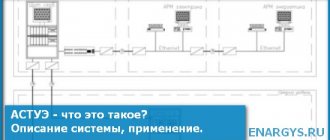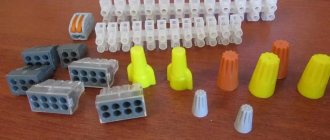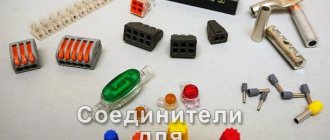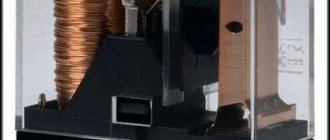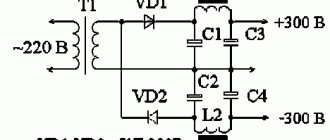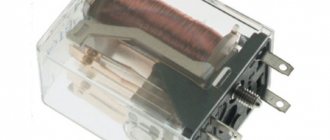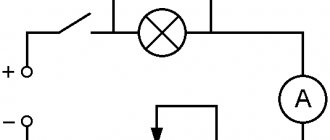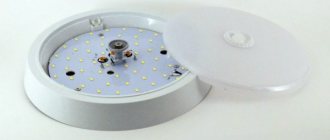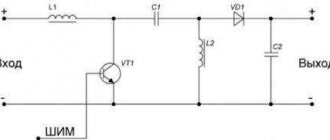The more consumers there are at a facility, the higher the uncontrolled energy consumption. In large enterprises, where consumption is measured in tens or hundreds of thousands of kilowatts, this is a huge overhead expense. Every prudent owner wants the cost of organizing to be as small as possible. This is especially important for production: reducing the cost of manufactured products provides undeniable competitive advantages in the market.
Initially, this was done by special units for accounting and monitoring energy consumption. Previously, before the introduction of automation, the chief power engineer’s service employed dozens of employees with high salaries. But the human factor did not provide the opportunity for effective savings.
A couple of decades ago, engineers and scientists introduced the ASKUE system (automated system for commercial electricity metering). The technology involved the use of microprocessor control, which was quite expensive at that time. Of course, if we were talking about millions of dollars in energy costs, the funds invested in installing ASKUE paid for themselves quickly.
Application of ASKUE
An information processing center (IPC) is installed in the control room; a separate room is not necessary; data on current energy consumption from each group of consumers flows into it.
Over time, an automated metering system began to be implemented at facilities with lower power consumption: for example, in residential neighborhoods. Serial production reduces prices, and the introduction of ASKUE has become possible even at the level of small housing cooperatives. In this case, the information processing center can be located both in the control room of the energy supply company and in the office of the board of housing cooperatives.
Modern technologies make it possible to organize a data exchange network not only through specially equipped networks. Your own wiring is quite expensive: the cost of the cable, labor costs for installers, rental of load-bearing supports, project approval. With the advent of publicly accessible means of communication, it has become possible to reduce the costs of operating automation of accounting systems. Wireless communications, cloud networks, free access to the Internet allow you to control energy consumption on mobile devices and computers, which there is no need to buy specifically for ASKUE.
Any user, or designated operator, controls the equipment of an individual or public ASKUE from a virtual workplace, or even from a smartphone. The main costs come down to the purchase of subscriber control devices and software. Today, Smart Home technology is being actively implemented, within which it is possible to set up electricity metering in small rooms. The owner of a home or office can automate energy consumption while being at any distance from the control object.
We’ve sorted out accessibility and convenience, let’s look at the operating principle of ASKUE.
Who benefits from the implementation of ASKUE
The cost of electricity is calculated differently for different categories of consumers: businesses, enterprises and households. But ASKUE is useful for everyone because it reduces electricity costs. We install ASKUE systems at industrial enterprises, in apartment buildings and even gardening associations, in sales and management companies. In all cases, the implementation of such a system pays off in the future, which explains the widespread transition to automatic electricity metering.
The creation of ASKUE is beneficial to different categories of users:
- Business representatives. Through such a system, you can directly influence the cost of paying for energy consumption.
- Large consumers planning to enter the wholesale electricity market cannot do without ASKUE, since it allows them to save on the services of intermediaries by switching to a system of direct payments to the supplier.
- Management companies, resource supply organizations and the population. ASKUE helps housing and communal services organizations simplify their work with consumers, and it becomes easier for the latter to pay for services. In addition, ASKUE minimizes unmetered electricity consumption.
How it works
Let's start with the tasks performed by an automated system for monitoring and accounting for energy consumption:
- Collection of data from each individual consumer (group of consumers) about the consumption of electrical energy at the current time and for a certain period.
- Transfer of data from monitoring devices to a unified information processing center (IPC). Information channels cannot be intercepted or bypassed, since communication through them is encrypted.
- Processing the received information, systematizing it, obtaining summary reports and a current picture of energy consumption in real time. Performed using computer technology.
That is, ASKUE allows you to collect information about energy consumption from an object (group of objects) with a high degree of reliability. At the same time, possible errors and deliberate distortion of information are minimized, which is often encountered during manual data collection (the notorious human factor is eliminated). This helps prevent unauthorized connection and illegal extraction of electricity. Therefore, large energy operators welcome the introduction of such technologies.
In addition, installation of ASKUE throughout the entire chain from the power plant to the end consumer ultimately provides significant savings in energy resources. Not to mention the reduction in costs of energy supply companies that arise when the transferred capacities do not correspond to the readings of the consumer’s internal metering devices.
Problems solved by the producer and consumer of electricity
- Energy supply companies do not spend much time or money identifying unauthorized electricity withdrawals. In addition, by systematizing data on consumption levels, unified energy systems of regions and the entire country can timely distribute power to eliminate critical points of excess load.
- The consumer controls his expenses, thereby saving money. Automated accounting allows you to credit money without the need to take readings from electricity meters, calculate the cost of tariffs, or manually pay bills. It is enough to install software on the organization’s computers to account for and generate payments for electricity.
- In addition, working with automated control allows you to analyze cost parameters and select prices for consumed electricity with different tariffs: including differentiation by time of day.
Advantages and disadvantages compared to traditional accounting
Without automation tools, effective metering of electrical energy becomes impossible.
An “army” of meters from which you need to take readings, or receiving the same number of calls from subscribers is difficult. Then you need to enter an endless stream of numbers into the computer, process them, print receipts and send them out again. And at the same time, do not make a mistake.
Why carry out such a gigantic amount of work using ineffective methods when ASKUE exists? Of course there is no need. Users of the automated accounting system have already become:
- Apartment buildings.
- Cottage communities (where they install ASKUE meters with a remote control on a pole).
- Rural settlements.
- Gardening partnerships.
- Garage cooperatives.
- Agricultural communities.
- Industrial enterprises.
- Municipal organizations.
- Construction companies.
And in conditions of harsh climate, long distances, and inaccessibility of individual accounting objects, the system simply has no alternative.
Using automation and telemechanics, you can control energy flows and at the same time manage them effectively. Preventing and eliminating accidents in a timely manner, saving electrical energy.
ASKUE has many advantages:
- Continuous collection of information from metering devices with accumulation and processing on the server, displayed on the monitor screen.
- Accurate metering of electricity consumption.
- Automatic control of energy consumption levels in accordance with specified parameters, with the possibility of remote influence.
- Long-term storage of accumulated information in a convenient format.
- The ability to quickly diagnose data.
- Quickly obtain information about energy consumption for any period of time.
- Convenient analysis of the energy consumption structure for the purpose of its subsequent optimization.
- Detection of theft due to unmetered consumption, unauthorized access, parasitic connection, deception of metering devices using technical means. It is almost impossible to deceive the ASKUE counter. There are craftsmen who reflash such counters, but the new system will detect fraud using special algorithms.
- Instant recording of deviations in power supply parameters, which allows you to quickly identify emergency situations.
- Forecasting the level of consumption for the required future.
The disadvantages of an automated accounting system include:
- High cost, compensated by quick payback.
- Risks of mechanical damage to network sections.
- Signal instability in case of strong electromagnetic influences or shielding conditions of metering devices.
- Information vulnerability of transmitted data.
Despite the shortcomings, the system is quite convenient, which is confirmed by the experience of its operation. And the identified shortcomings can be eliminated at the design stage of a specific ASKUE.
Read the link about what the ASKUE “threatens” for ordinary residents, about the pros and cons of “smart” electricity meters, which will begin to be installed in July 2022.
Technical support for automated commercial electricity metering systems
- Installation of modern electronic electricity metering devices at all group consumption points, with the ability to remotely read parameters in real time (computer or specialized network).
- Development and connection to metering devices of special adder modules with internal memory, which will accumulate data and separate them according to tariff classification. These modules must be provided with autonomous (backup) power.
- Laying wired communication lines between metering devices, data storage devices and information processing centers. Data exchange can be organized using wireless networks or using the Internet. Communication lines must provide for sending reports in real time to the consumer's subscriber device to ensure control over the formation of summary data. Channels are protected from unauthorized connection (encoding). First of all, this is done to protect against hacking and the provision of distorted information.
- Arrangement of information processing centers (IPC), equipped with high-speed computing systems (servers). It is also necessary to provide for the possibility of connecting remote access systems to the COI, so as not to tie operators to a physical workplace.
- Equipping servers and computerized workstations with specialized software. When using remote access, it is necessary to install programs running under mobile operating systems.
- Ideally, the energy sales company should have access to the information. For efficient operation of automation, autonomous equipment is also installed at transformer substations.
Subscriber software and hardware
An electronic active energy meter (single-phase or three-phase, see Fig. 2) performs the following functions:
— measurement and accounting of consumed active electricity and power;
— calculation of unpaid electricity (calculation of debt);
— warning the subscriber about exceeding the payment debt, limiting the power consumed by the load or disconnecting the load;
— measuring the current value of the network voltage, recording facts of exceeding its standard limits and protecting the subscriber’s electrical equipment by disconnecting it (set at the stage of setting up the meters);
— maintaining a calendar and real-time clock, multi-tariff electricity metering;
— receiving and executing control commands;
— turning on/off the load or limiting power consumption at the command of the energy sales manager;
— maintaining a log of electrical network events and a log of received commands;
— indication of the status and operating modes of the meter, network and load parameters;
— transfer of the contents of the non-volatile memory of the meter to the controller device via radio or infrared communication channel, KB-485 interface;
- other functions.
Rice. 2. Electronic multifunctional meter
Rice. 3. Subscriber kit mounted on the OIC rail
The RCD (relay) acts as a switching element in the load circuit.
It is controlled by an electricity meter and installed together with it in the panel on the OSH rail (see Fig. 3).
ASKUE has two versions of electricity meters: for individual buildings and for multi-apartment residential buildings.
The modifications differ in that the meter for an apartment building does not contain radio modules, which are included in the meter for individual buildings. The meter of an apartment building is controlled via the KB-485 interface from a master unit additionally installed on a group of meters (up to 255 pcs.). The latter has the ability to receive information from energy sales both via a radio channel and through KB-485 from a mobile controller console or laptop computer.
System separation
For uninterrupted operation and increased reliability “to failure”, the automated system for commercial electricity metering is carried out according to a multi-level principle.
- The first level is a system of subscriber metering devices. In branched networks, this level also includes data storage devices. In addition, you can use various sensors that analyze the actual energy demand at a specific facility. For example, light or temperature sensors.
- The second level is a system for transmitting data and converting information into a format with which the information processing center software works. In some projects, data storage devices belong to the second level if they are integrated into signal conversion systems. Communication lines can be classified as the second level of the system, or separated into a separate structure. For ease of maintenance, they are usually tied to level 2.
- The third level is information processing centers: management servers and storage of finished converted data. As a rule, automated operator workstations are equipped at the COI locations (if a serviced ASKUE is used). The hardware is installed taking into account information protection and system redundancy. If the control center is responsible for managing the power system (distribution and transformer substations), an unexpected shutdown of the system can lead to a large-scale breakdown of the power system.
Installation of ASKUE system
All installation, connection, and adjustment of automated commercial electricity metering systems are performed by certified contractors. The contractor, upon completion of the work, must coordinate and organize the connection of the complex to the management of energy systems on the territory.
Installation sequence:
- Study of the site, selection of equipment in agreement with the customer, preparation of design and estimate documentation. The customer is obliged to provide the contractor with all the documentation used to supply energy to the facility.
- Preliminary approval of the project with energy sales authorities.
- Carrying out commissioning work, determining the period of test operation, putting the system into permanent operation mode.
- System support after installation and launch.
- Setting up software, connecting remote workstations.
When setting up the system, performance tests (recovery) in emergency situations and checking protection against hacking of information are required.
The Contractor is responsible for warranty service and for the safety of ASKUE within the territorial energy supply system.
Functions
The ASKUE system, which monitors and accounts for electrical energy, organizes the following functions:
- Constant automatic collection of information from metering devices and its further sending directly to the server.
- Continuous accumulation and subsequent storage of information for past periods.
- Identification of unauthorized connections to the energy supply network in the structure.
- Analysis of data on energy consumption in the structure, which allows for its full optimization.
- Remote connection, as well as disconnection from the current network of end consumers.
Equipment for automated commercial electricity metering systems
Data transmission systems, information format converters, data storage devices are special devices. The customer chooses the brand, configuration, and composition of the equipment. Subscriber devices are standard certified metering devices, with the ability to connect to information reading devices.
Without connection to the system, these meters operate as usual.
Moreover, for the operation of ASKUE it is not necessary to use electronic metering devices. There are also mechanical models with the ability to select data.
Workplaces and server equipment are organized on the basis of personal computers. Typically running Windows OS. After installing specialized software, the computer becomes part of the ASKUE.
Specification
It would be advisable to specify that the ASKUE system appeared somewhat earlier than the AIMS KUE. Currently, it is used only for small and medium-sized legal entities, as well as household consumers. It is important to note that current legislative acts exclusively regulate the accuracy class of information recording mechanisms and measurement tools. The main condition necessary to enter the wholesale electricity market is the presence of an automated information system. By the way, there are infinitely many requirements for this system.
Bottom line
Power engineers believe that soon all energy supply systems will be integrated into ASKUE. There are more and more electronic devices, electricity is a renewable energy. Those organizations that are already connected to the automated commercial electricity metering system will work as usual. The rest will still have to purchase equipment and order installation. Experts have calculated that the introduction of a global automation system will reduce energy consumption nationwide by up to 40%.
Why is this needed?
In this chapter, it would be appropriate to consider the main goals of the formation of the system under consideration. So, the implementation of ASKUE allows absolutely any consumer to provide:
- Measuring the volume of consumed electrical energy with the exception of “manual” readings. In other words, after implementing the system, the need to record meter readings every month on the thirtieth day disappears, because ASKUE organizes this automatically.
- Control of electricity consumption (hourly, daily, weekly, etc.).
- Implementation of automatic collection, processing and storage of information regarding the volume of electricity consumed.
- Calculation of electricity balances and control of its “leakage”.
- Analysis of electricity consumption.
- Receive instant information about all information accounting problems.
All the points presented above, one way or another, allow the consumer to significantly reduce their own energy costs. Due to what and how does this happen? It would be advisable to understand this issue in more detail.
